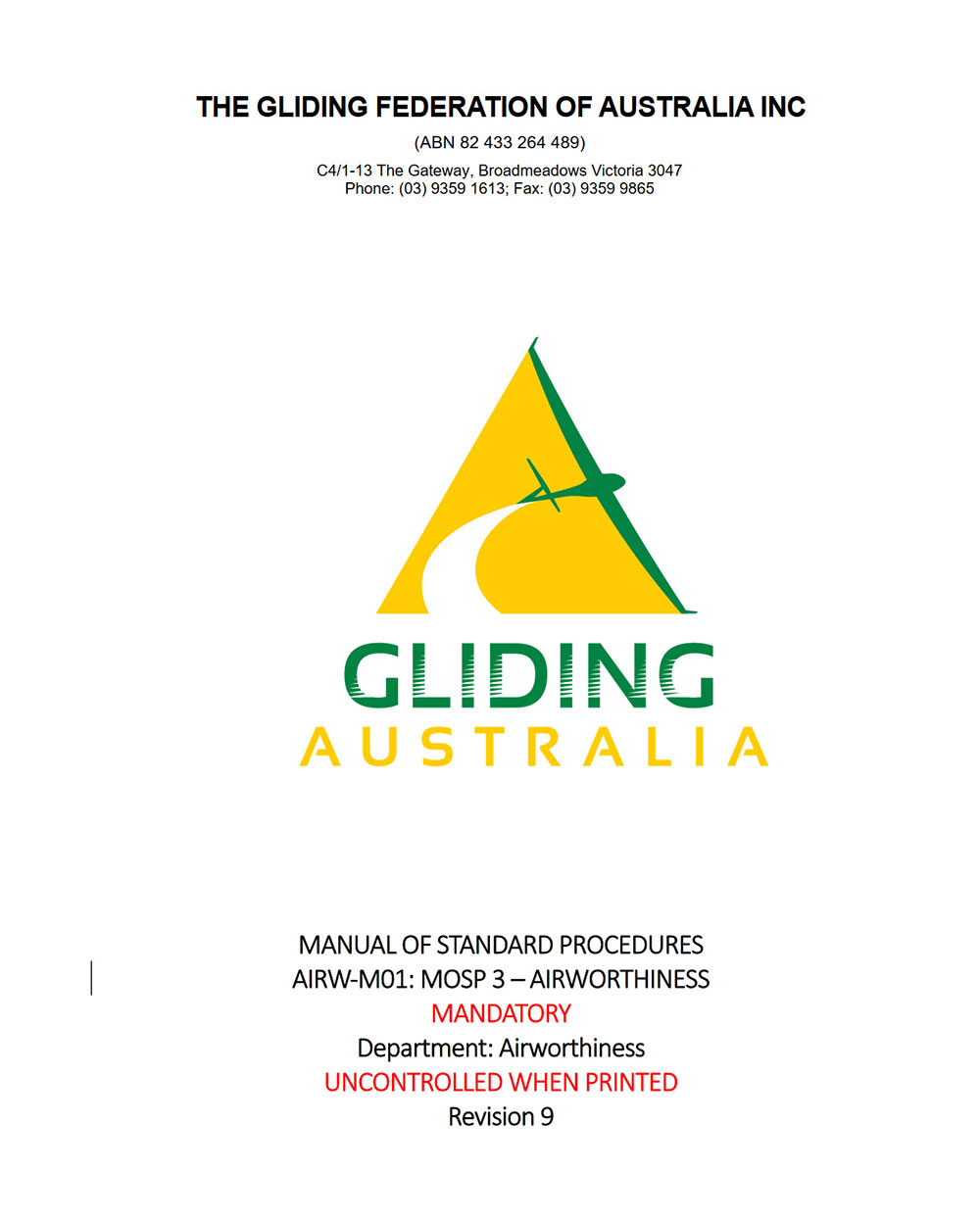
After considerable investment in time and effort, both within Gliding Australia and CASA, I am pleased to announce that Gliding Australia has been delegated authority to administer weight and balance for sailplanes. This means that we can recommence weight and balance training and issuing weight and balance authorities.
This is not without some changes to our previous weight and balance system. One of the biggest changes is that we now have two levels of weight and balance authorities – basic and advanced. The basic weight and balance authority allows a member to weigh and calculate minimum and maximum pilot weights for relatively simple sailplanes. These basic sailplanes do not have a fuel system, an engine, or a tail ballast tank. This enables very straightforward calculations where the member with the authority follows a relatively fixed process, as there are fewer variables to consider.
Sailplanes in the advanced category have many more variables to consider - for example, fuel tank location, fuel levels and variable tail ballast. Because of these extra variables, it is difficult to have a fixed process, and greater knowledge and more flexible thinking is required. Having two levels of authority is intended to allow members to gain experience and knowledge with basic sailplanes before progressing to types with more challenging weight and balance scenarios, if they wish.
Another major change is the introduction of currency to an airworthiness authority. This was introduced because we have noted several weighs in the past where mistakes were made because the member with the authority was rusty and hadn’t performed a weigh for several years. The authority will only last for three years. The RTOA is able to extend it for a further three years, providing the member is current with weight and balance activities. Members with a weight and balance authority will need to keep a logbook of their activities to demonstrate that they are actively using the rating and maintaining currency. The log will need to be presented to their RTOA before extending their rating for a further three years.
Training courses will be arranged by your regional RTOA. Please contact them if you are interested in the course.
MOSP 3
To implement the new weight and balance system, MOSP 3 has had an update. This update was delayed until we had received the weight and balance delegation from CASA. Because of this delay, many more changes were needed than just the weight and balance sections. There are updates to the section on Experimental Certificates to keep up with Part 91, improvements to the section on recognition of prior learning, updates to oxygen systems, updates to mandatory maintenance requirements, and most of the existing MTARs were incorporated. Change bars have been included in the document to make it easier to identify where significant changes have been made.
Along with the MOSP 3 updates, a new Weight and Balance Manual and a new training syllabus are now available on the Gliding Australia website.

Basic Sailplane Engineering
To round out the set, Basic Sailplane Engineering has also had an update. This includes updates to the sections on electrical systems, harnesses and flutter. The new sections on L’Hotellier connectors, and Radios, Flarm, Antennae and Avionics have been integrated. Of particular note is that the mandatory maintenance requirements for releases and L’Hotellier connectors have been moved to MOSP 3 Section 13. Change bars have been included in the document to make it easier to identify where significant changes have been made.
By Anthony smith
Chair Airworthiness department
You will find MOSP3 and all the documents you need at
Direct link to MOSP 3 tinyurl.com/5y797n9w
Direct link to Basic Sailplane Engineering tinyurl.com/559jajrx
TIP !
If you have difficulty finding the exact document you need - you guessed it - GOOGLE it! You will often find the direct link straightaway.































